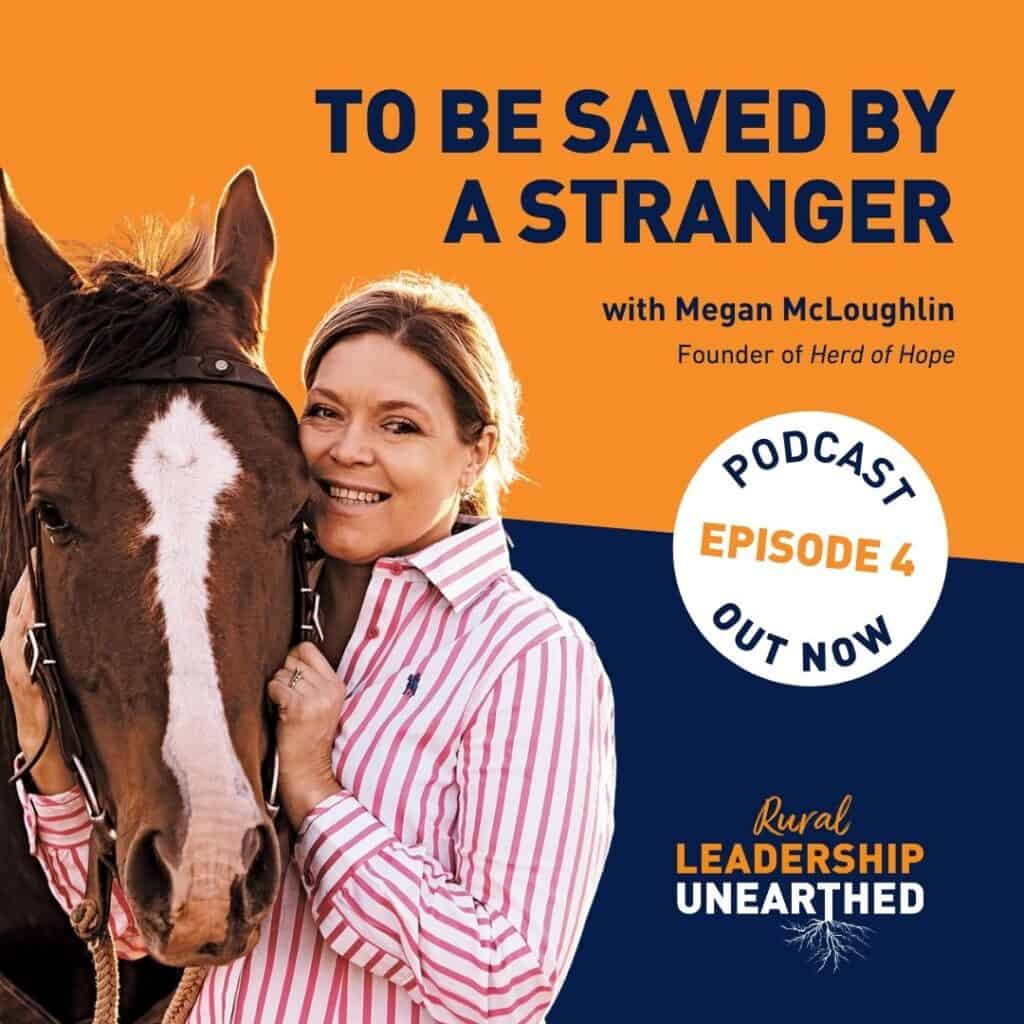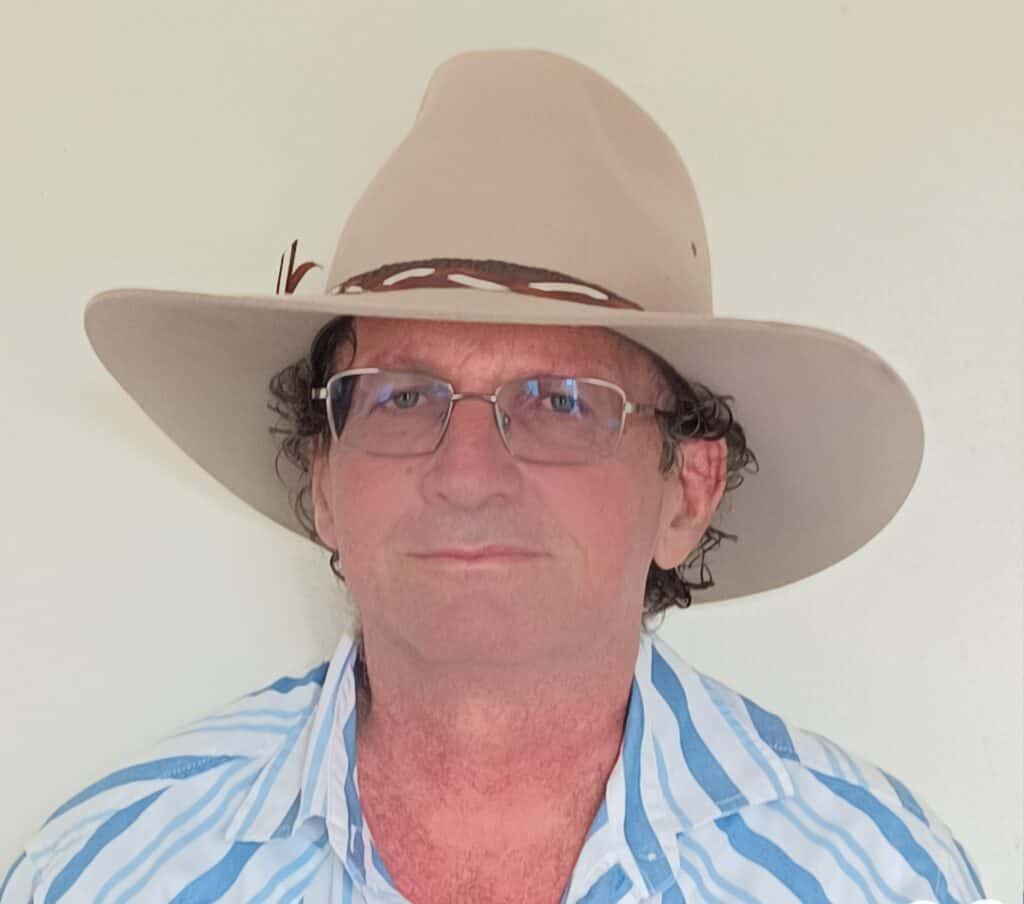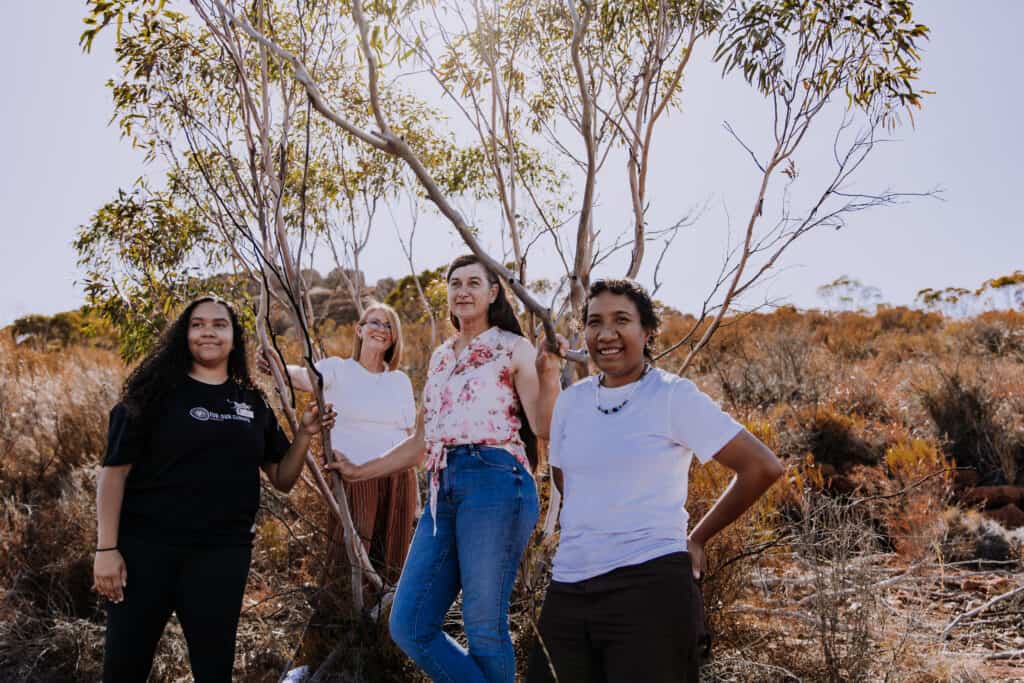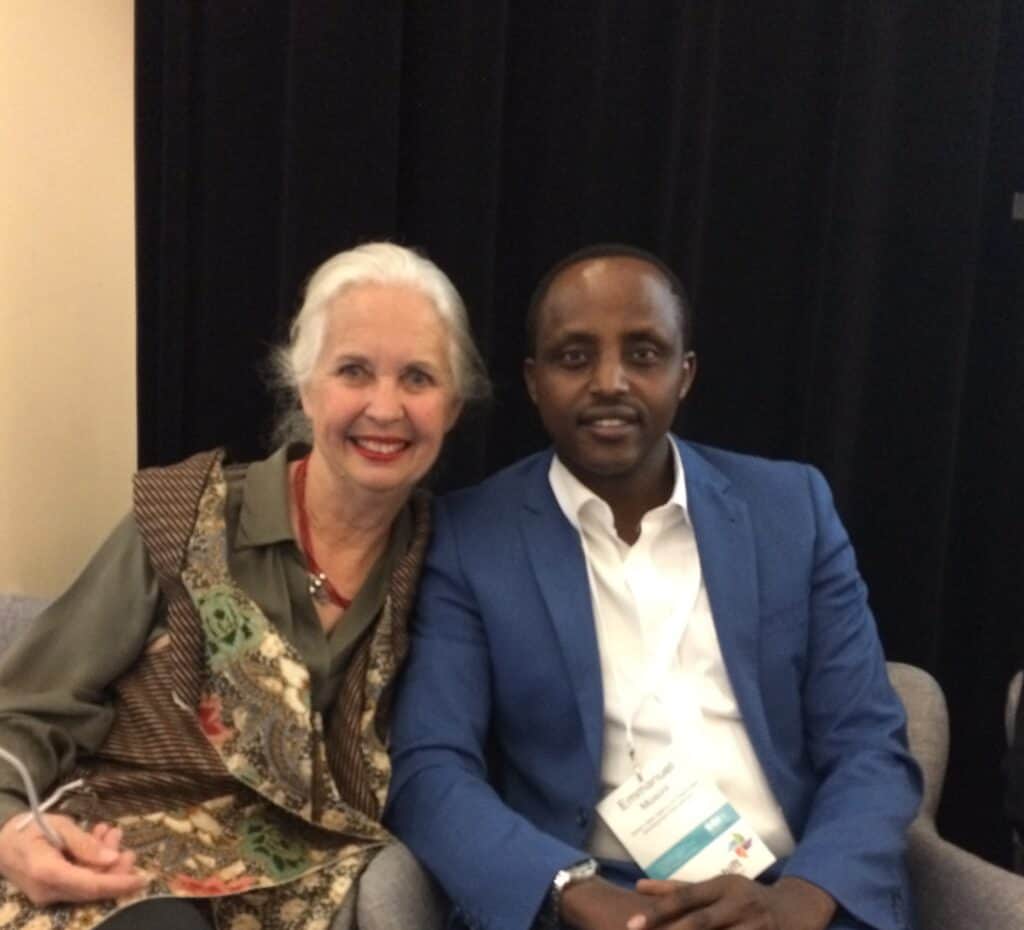‘Double organ transplant recipient’ was not something Megan McLoughlin ever imagined while growing up in rural South Australia. Freedom and wildness was just part of life as a daughter of the Willoughby dynasty of horsemen and women. There were few limits to what was possible. When Megan unexpectedly lost almost all her eyesight at the age of 26, it was this lineage of toughness, determination and optimism that carried her through the unthinkable challenges to come.
Today, Megan is a powerful advocate for the needs of those impacted by organ donation and is reframing our conversations about disability.
Megan sits down with our host, Claire Delahunty, to share her powerful story on the latest episode of Rural Leadership Unearthed. She generously describes what her road has been like navigating the life-threatening complications of type 1 diabetes. She also speaks about the inspiration she has taken from the humble herd animals she has spent her life around.
Megan undertook a mentorship through the Australian Rural Leadership Foundation’s National Mentoring Program in 2023 – a process which helped her realise she did not have to “prove” to the world hers is a life worth saving.
The mentoring program is part of a suite of leadership development activities under the Helping Regional Communities Prepare for Drought Initiative. It was funded by the Australian Government’s Future Drought Fund and delivered by the Australian Rural Leadership Foundation in partnership with the Foundation for Rural Regional Renewal.
To find out more about organ donation in Australia, head to https://www.donatelife.gov.au/

Claire Delahunty: Megan, please tell us a bit about yourself.
Megan: My name is Megan McLoughlin, but my maiden name is Willoughby. The Willoughby name is renowned throughout Australia in the horse industry. My grandfather, Tom Willoughby, is actually in the Australian Stockman’s Hall of Fame. He’s an amazing person in himself, achieved a lot of Australian titles in different sports. I think one of the most amazing accolades he had was he won champion gentleman rider at the Sydney Easter Show in the 1950s and then the following week won two Australian titles in bull riding and saddle bronc riding. So it shows the diversity and the sort of horse riding we grew up with. I think the strong thing for me is that it was actually his mother’s mother that started the horse love in our family.
I now live in the Barossa in South Australia, but most of my life I grew up in rural areas in Australia. For 14 years, my parents, Jim and Tracy lived in South Australia in the Flinders Ranges in a little town called Melrose that had a population of about 200 people.
At the age of 14, my parents upgraded their farm and we brought a farm 30 k’s north of Border Town in the southeast of South Australia. I have two younger brothers. There’s five years between us all.
I married a man about a month after my transplant by the name of Mark and I somehow convinced him to move to rural SA. And we are very fortunate to have two kids – Sam is nine and Ella just turned eight. That was really stupid having two kids 15 months apart when you’re legally blind and a transplant recipient [laughs].
CD: At what stage in your childhood in terms of health complications creeping up on you and things changing for you as you grew?
MM: As a young kid, when I was about six, my mum was diagnosed with type 1 diabetes quite late in life. I think she was 27. At about the age of eight, I started showing symptoms of type 1 diabetes. So just to clear up some myths and misconceptions about the disease, type 1 and type 2 are completely different diseases. So type 1 is when our pancreas actually fails. We haven’t done anything to induce that failure. It is basically a hereditary defect or something that’s gone wrong.
Being in a rural community where I was the only kid within 400 Ks (it felt like), that had been diagnosed with this, no one really understood the education behind it. So my teacher and everyone was like, “you can’t participate. Look, you shouldn’t be doing this”.
I thought stuff that – I’m sick of being told I can’t do something. At about the age of 12, I spoke to my grandfather, Graham Ferrett, who was my mum’s dad, about my situation with diabetes and I decided that in my school holidays in the October, I would ride my two horses from Melrose in the Flinders Ranges to Adelaide, a 300 kilometre journey. I was going to do it because I was sick of people telling me she shouldn’t be doing this and she shouldn’t be doing that.
But my grandfather said, if you’re going to do it, you do it properly. He organised it to be done over seven days. So we averaged about 50 kilometres a day. We raised $25,000 in the week and it went towards diabetes research.
Then when I was about 17, I was doing work experience at a racing stable, working with their amazing vet, Cam Baker, thinking, that’s what I want to do … A horse turned around in the walker and kicked me straight above the liver. So they rushed me in to have a ultrasound.
The ironic thing was when they’re having to look to see if all the organs are okay, they discovered that I have what’s called a horseshoe kidney, which means that basically I have one kidney. That’s not a complication of diabetes, but with the diabetes, things were going to get a bit complicated eventually. And so that was that.
At about the age of 26, I started having complications with my eyes. I’d noticed that I couldn’t see as well and had gone in for what’s called laser treatment at the back of your eyes. So as a diabetic, you form vessels and your body thinks it’s doing you a favour, when in actual fact it’s actually detrimental and taking the blood out from the eye. So they zap them mainly through laser to prevent that. And unfortunately they had the settings on incorrectly and hadn’t calibrated the machine. So I had 8 ,000 hits of laser in the sitting, when you’re supposed to have about 3 ,000 over 12 months and my eyes bled. I was rushed in for surgery and had been told that I’d lost my eyesight in that moment.
CD: What was it like digesting that?
MM: I think the biggest thing for me was it happened so quickly and I’m grateful for that. I feel so sorry for people that lose their eyesight and it’s degenerative. So just when they come to terms with the loss they’ve had, they then lose more. My loss was just straight away and that I am grateful for.
I think the biggest thing I struggled with was the fact that a lot of people let you go as a friend. And as 26 year old, we’re extremely social. I was a rural country kid, loved life, very social. And all of a sudden you’ve got people saying, look, I would have invited you Megan to my party, but oh, it’s just too hard to look after you. And all you’d be doing is sitting there by yourself and. I don’t think people realised that you just wanted to sit there by yourself. You just wanted to be included.
CD: How did you navigate that?
MM: Within three days, I had to move back to my parents’ farm. That was really gut wrenching because you’re fiercely independent. What I ended up doing was I’d set myself a goal: If I could dress myself that day, I was winning. And then I started going for a walk every day, and then I encouraged my dog. He got excited about going for walks and so he would come with me. And I think from losing my eyesight in such a dramatic circumstance, I realised that the ones I had around me were my pets and my animals. It really showed me the psychology behind it. This dog never changed the way he looked at me. I had no eyesight. He didn’t care.
And that gave me the confidence to go, well, maybe I could jump on a horse.
CD: How did it feel?
MM: It felt like my happy place. It felt like I was in complete control finally of something in my life. Instead of being reliant on people telling me, you’re going to lose your eyesight, you’ve got to take this medication, you can’t do this, you can’t do that. I was in complete control finally of something, something so exhilarating that’s completely and utterly dangerous, but I was in control.
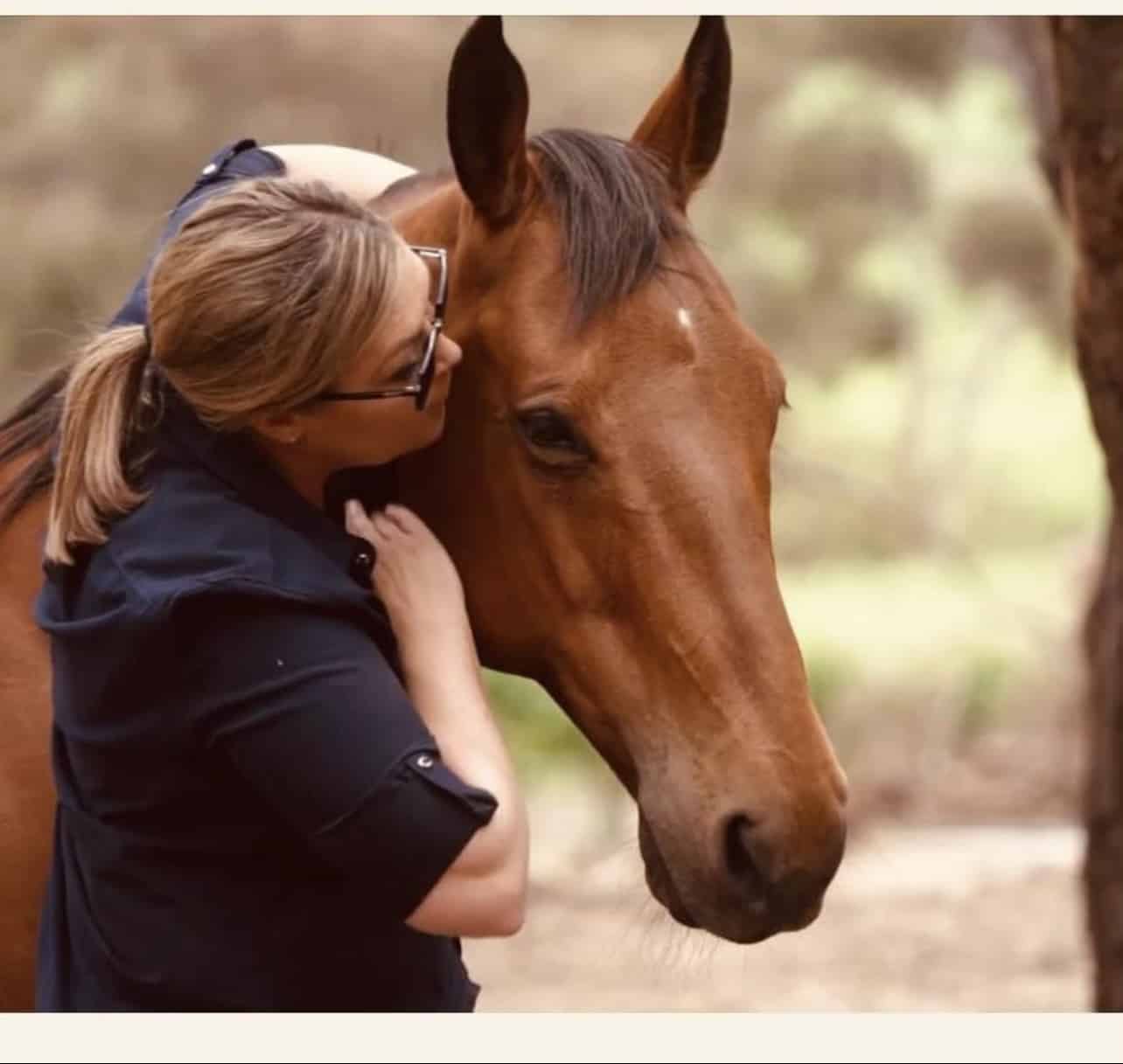
CD: Not long after your eyesight was so badly damaged. You then faced organ failure. Do you mind telling us about what that next chapter brought?
MM: Just after I lost my eyesight at 26, unbeknownst to most of us, you can actually lose 90% of your kidney function without any changes to your health. And the scary thing about that is if you get down to 10% of kidney function, you’re on dialysis.
I started to feel unwell. I was a rare person that in three months I went from 63% of kidney function to 24%, and then from 24 to 7% in three weeks, and so started dialysis … The funny thing I find is that I was more taken aback when they said I had to start dialysis than when they actually told me I needed a transplant. The dialysis is what scared me.
At the time, my biggest fear being legally blind was actually missing the flight to Sydney. The double pancreas and kidney transplant I needed at the time was only performed at Westmead Hospital in Sydney. And my fear of forgetting the flight was so overwhelming that I actually moved myself to Sydney.
CD: How did you absorb needing a transplant?
MM: I think the bonus of being in your 20s is ignorance sometimes. And my upbringing was always the glass is half full, there’s a couple of drops in the glass, it’s better than nothing guys, let’s keep going.
Because the reality of what I needed was someone to pass away to save my life. As a person that would always give to others, I didn’t know how to take that grief and that baggage on…
CD: How did the transplant go? And how did you embark on that new lease on your life?
MM: The funny thing was they had told me three weeks earlier, I was probably 12 months off receiving the phone call. I was living in Hunters Hill and then, at about 9.07 AM in the morning, because I’m legally blind, I had one of those old Nokia phones that would say, who was ringing. And the phone started chanting “Sydney kidney”. And I thought it was just the doctor ringing to tell me that my bloods on dialysis had come back bad, which is a normal occurrence and that I needed an infusion or something else. I’ve literally answered the phone to Paul Robinson and I’m like, “hi Paul, how are you going?” He’s like, “Megan, how would you like some organs for Christmas?”
And I remember stopping and thinking about it. And I said, “oh, Paul, that would be amazing” in my most professional phone voice. And then he said, “you’ve got literally 60 minutes to get to the hospital. Megan, if you’re here in 61, it won’t happen”. I later found out it was because a gentleman couldn’t get over from interstate in time. And I was there. I was ready. I was available and could get there. I think the hardest thing for any transplant recipient in that moment is you go, “oh my God, I’m saved. My life has just got better”. And then your heart sinks and you stop and you have the realisation for another family sitting in a hospital, the thing is they’ve just had to let go of hope. They’re not taking their loved one home.
That was the hardest thing to stomach, and go, am I worthy? How am I going to live up to this complete stranger’s expectations? I think the thing for my situation was it didn’t only save life, it created life.
CD: I’d love to hear about Herd of Hope, about the focus that you honed on how you could be supporting others who were experiencing the world of organ donation from one side or another.
MM: The thing that was pivotal in my life was going into a transplant by myself. And the reality for many rural people is that that often will be the case.
I reached out to the lady that created Millennium Television’s, McLeod’s Daughters, Posey Graham Evans, and she began mentoring me. She asked “what do you think needs to happen?” I said, well, we need to bring this country together. We need a big event. We need to actually shock people to pay attention. So I decided I wanted to do a cattle drive on the Sydney Harbour Bridge.
Unfortunately, we didn’t get across the line. And when we were sitting at the airport feeling very defeated, coming home, we got a phone call from the mayor at Waverley council in Bondi saying “stuff the bridge, you can have the beach”. In what I thought was one of the greatest failures – and I failed on a public platform, everyone had seen it – became one of the greatest achievements because going onto Bondi, we had more people that could join us.
And the amazing thing I think besides the actual awareness it brought for organ and tissue donation was how this country can come together. We didn’t have two bob to rub together, but everyone could see the need for what needed to take place and the amount of people that just would help. We had 3000 people join us on the beach that morning, which was huge.
CD: Do you mind filling us in on what exactly Herd of Hope is and what you’ve been doing through that amazing vehicle?
MM: I am a big believer in animal psychology and I think they do it better than humans. So a herd of cattle; a herd of horses will stick together and we are actually losing that perspective as humans. We’re so focused on what we’re doing and not actually saying to a mate, are you okay? Or working as a herd. And so the way that I created the Herd of Hope was through that platform. I thought a herd of cattle would do it better on a station than humans. And the end of the day, you can have a whole mixed breed of cattle in a herd. They’re not all going to look at each other and go, ‘mate, you’re a bit speckled, go stand over there … That’s not how they work. They work together. And it’s very similar to the world of transplants.
I went and met with all the other organisations in the portfolio saying this is what I need to do. This is not an event for one person. This is for all of us. Let’s bring some awareness for these rural people that are passing away. They shouldn’t be. Or spending eight years on dialysis. That shouldn’t be. There is no reason in a first world country that children should be passing away waiting for a transplant. That is Australia’s reality. We needed to shock everyone. And it resulted in working with a heap of different organisations, the government organisations to say, ‘let’s all come together, let’s drop our agendas aside, leave them at the gate and let’s try and make a difference’. And that was the principle behind it all.
CD: And what kind of things have you done with the funds you’ve raised over the years?
MM: The biggest thing we were able to do was we met with a gentleman by the name of Professor Ian Olver and with Dr. Kate Gunn. Dr. Kate Gunn has designed the iFarmWell program. They said, “mate, you can preach until you’re blue in the face to politicians about change in rural health, but unless you have a study, they don’t want to know you”. So we were able to fund a study through the University of South Australia based on the regional or terminally ill regional transplant recipient and their mental health journey. And further to that, we extended it to the carer because at the end of the day in rural areas, the carer is the person that’s got to run the business, got to run the farm, got to raise the children and also got to be a nurse overnight. In South Australia, it was received very well. We were funded to run a peer support program.
I originally set out to do – similar to the breast care nurses system in rural areas – a transplant nurse. I’m so grateful we did the study because that wasn’t what patients were after. They were happy with their transplant doctors. They were happy with the nurses. They wanted to hear from someone that had gone through it. Post and present.
I think the most rewarding project we were involved with was the ‘Hope Outback’.
We took children that had been affected by organ donation, but not transplantation. Their mum or dad, brother or sister had become an organ donor. These children were dealing with a lot of tragedy. We took them out to a camp called Hope Out Back onto Undoolya Station in the NT for five days, where we just let them be kids.
Because their parents had lost a child or lost their partner, these kids were wrapped in cotton wool and rightly so, but we just wanted to peel it off a little bit and go, ‘you can be a kid’. And that was probably the most rewarding sentiment. It was so simple. They did a bit of equine therapy with a mate of mine, Nat Turner, who’s Indigenous, and her grandma was born on Undoolya station.
It was just kids being kids. We brought their families up to stay in Alice and meet other people that had a similar experience so they could all work out they’re not the only ones.

CD: Megan, everything you’ve done since your big ride as a 12 year old, you’ve done it with a herd and a lot of support, but you’ve also had to be the leader in many ways. Have you thought of yourself that way or has it always been about doing it together?
MM: No, I don’t see myself as a leader. I see myself as someone that’s just getting on with life. I’m just playing with the cards I’ve been dealt. And that’s all you can do really, isn’t it? So some people think they’re leaders and are very, very good at it. And then others just fall into that position unexpectedly and probably don’t – like myself don’t want to be there.
I think one of the most uncomfortable moments for me was at Bondi. We lined up to do a minute silence for all the transplant recipients that didn’t get a transplant in time; donor families, everyone that had passed away and that’s what we have always done at the 20 events we’ve done for the Herd of Hope.
And I broke down and started crying and because dad and I were mic’d up to explain how you move cattle, through the microphone system, there’s this obnoxious sobbing – this deep cry. I was so embarrassed. I thought that was weakness at its best.
And a lady I’d never met that was struggling with the fact she’d had a transplant from Orange in New South Wales, had come down to the beach because she’d heard about it. And what I thought was my biggest moment of weakness, she saw as my greatest moment of power and leadership. And as a result nominated me for an Australian of the Year award. And that was really humbling and really hard to deal with because I grew up in a herd. It’s a team environment. It’s not just me. There’s a whole mob of people behind me and I struggled with that award and accolade for a very long time.
CD: I can hear how it is hard to have it sit with that resilience and toughness, but that’s got to be part of it, doesn’t it? Being able to cry, being able to show the depth of feeling when you were working in a space where it’s all about human beings and connections, isn’t it?
MM: It’s about grief and how humans deal with it. It’s about love because the one thing I’ve learnt from all the people I’ve spoken to is they’d give anything for five minutes to say to their loved one, ‘I love you’, just one more time. So guys, we’ve got to start doing it when they’re still here. I cannot get over the efforts we go to, to attend someone’s funeral, but we haven’t had a coffee with them for two years.
We’ve got to change that and that’s that herd mentality and that’s basically what we build a very little charity on with no government funding to change that perspective. If we only change one person’s decision to be an organ donor, and if one person reading this decides to register and tells their family, we’ve saved eight lives potentially. That’s worth it all for me.
CD: You still have by no means an easy run with health and you have to be extremely vigilant and engaged with the medical system to keep yourself running. And what is next for you as well?
MM: Since I had my children, I was diagnosed with cervical cancer. I had a full hysterectomy with an amazing surgeon in Sydney, Dr. Robyn Sayer. I have ongoing treatment every six months as ramifications. Because I’m being proactive, which I encourage everyone in rural communities to do, nothing’s progressed to the point where I’ve got worse. We’ve caught them in time.
So that’s what I handle on the side but I think my focus was I wanted to get back in the saddle. About five years ago, I brought an amazing horse named Biscuit from a lady up in New South Wales. He’s turned out to be the greatest thing I could have bought. So going all through my health conditions and everything like that and having an eight and nine year old kid now, I want to show them that even though I’m disabled and have 7% eyesight, have a go at everything.
A couple of years ago, I started barrel racing again and barrel racing is a speed sport with horses. It was what I’d known from a young age. It was familiar to me. I’ve been working really hard with Biscuit.
I’ve started using echolocation. I have people blowing whistles outside the arena to show me the distance from the drums in order for me to turn them. I suppose where I’m tying that all in is life is too short to sit in the bleachers and no one should be the understudy in their own story. Be the star and do things you enjoy.
I found that with being disabled – and I used to hate that word and for 12 years I’d never admit to it – I’d just try to keep up with everyone. Watching my kids that have grown up with a legally blind parent and their aptitude for acceptance … that’s normal for them. I wanted to educate a wider community on real ability.
I use the tagline, “don’t dis real ability”. It’s really simple. Let us show you what we can do and what we’re capable of. My kids know what I can do. My husband does, but they live it every day. Give yourself the privilege of spending some time with a person with a disability. Educate yourself or go and watch the YouTube clip.
CD: Megan, you have also been part of the Australian Rural Leadership Foundation’s National Mentoring Program. What has that meant to you?
MM: I won the lottery with my mentor, Fiona Taylor. I literally am so grateful she came into my life. And I had to go to Canberra for a meeting with the Organ and Tissue Authority, a community engagement meeting. And I deliberately organised to meet with her face to face. And she just automatically was the person I went, “I’m going to learn so much from her.”
And in my first meeting with her, we’re sitting there and she’s like talking through the charity and everything I’m doing. And she goes, ‘so where do you get an income from?’ Cause she’s got a financial background. I said, I don’t take a wage. And she looked at me and she’s like, I don’t understand. I said, well, for five, six years, I’ve run the charity voluntarily … 60, 65 hours a week.
She’s like, how do you do that? And I said, I have a very understanding husband. And in that moment, within half a session, she showed me that I was worth more than that. And I think because of the complications and the grief of having a transplant, I thought I owed the world and I owe that my donor family and my donor that I had been saved and I had been very detrimental to my own mental health.
In that one meeting Fiona’s like, “come on Megan, no, this is not how this flies”. She actually made me look at a perspective that I had value. Even though my life had been saved by a complete and utter stranger, I did not have to bust my ass to prove that I was worth saving. And I needed that affirmation from someone … For my mentor program, I’m probably the biggest advocate for it. And I learnt so much and I was so grateful for it because it was the turning point in my life where I actually went, yeah, “I’m okay and I can do this.”
To catch the full interview, head to the Rural Leadership Unearthed podcast website.
Megan’s story is one chapter of a larger narrative of ARLF change-makers and visionaries who are helping to reshape our rural, regional and remote communities.
To find out more about the impact Megan is having in championing organ donation across rural Australia and empowering people with disability, connect with her on Linked In.
This program received funding from the Australian Government’s Future Drought Fund. It’s delivered by the Australian Rural Leadership Foundation in partnership with the Foundation for Rural Regional Renewal.




